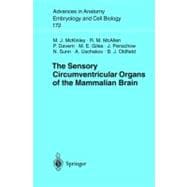
What is included with this book?
| 1 Introduction | 1 | (2) | |||
| 2 Location, General Structure and Ependymal Cells of Sensory Circumventricular Organs | 3 | (14) | |||
|
3 | (4) | |||
|
3 | (4) | |||
|
7 | (1) | |||
|
7 | (8) | |||
|
7 | (7) | |||
|
14 | (1) | |||
|
15 | (2) | |||
|
15 | (1) | |||
|
16 | (1) | |||
| 3 Regional Subdivisions Within Sensory Circumventricular Organs | 17 | (6) | |||
|
17 | (2) | |||
|
19 | (2) | |||
|
21 | (2) | |||
| 4 Vasculature, Compartmental Barriers, Neurons and Glia in the Sensory Circumventricular Organs | 23 | (12) | |||
|
23 | (5) | |||
|
23 | (1) | |||
|
23 | (3) | |||
|
26 | (2) | |||
|
28 | (1) | |||
|
28 | (4) | |||
|
28 | (2) | |||
|
30 | (1) | |||
|
30 | (1) | |||
|
30 | (2) | |||
|
32 | (3) | |||
|
32 | (1) | |||
|
32 | (1) | |||
|
33 | (1) | |||
|
33 | (2) | |||
| 5 Neurochemical Aspects of Sensory Circumventricular Organs | 35 | (20) | |||
|
35 | (12) | |||
|
35 | (1) | |||
|
36 | (3) | |||
|
39 | (1) | |||
|
39 | (1) | |||
|
39 | (2) | |||
|
41 | (1) | |||
|
41 | (1) | |||
|
42 | (1) | |||
|
42 | (1) | |||
|
42 | (1) | |||
|
43 | (1) | |||
|
43 | (1) | |||
|
43 | (1) | |||
|
44 | (1) | |||
|
44 | (1) | |||
|
44 | (1) | |||
|
45 | (1) | |||
|
45 | (1) | |||
|
45 | (1) | |||
|
45 | (1) | |||
|
46 | (1) | |||
|
46 | (1) | |||
|
46 | (1) | |||
|
47 | (1) | |||
|
47 | (8) | |||
|
47 | (1) | |||
|
47 | (1) | |||
|
48 | (1) | |||
|
48 | (1) | |||
|
49 | (1) | |||
|
49 | (1) | |||
|
49 | (1) | |||
|
50 | (1) | |||
|
50 | (1) | |||
|
50 | (2) | |||
|
52 | (1) | |||
|
52 | (1) | |||
|
52 | (2) | |||
|
54 | (1) | |||
| 6 The Neural Connections of the Sensory Circumventricular Organs | 55 | (12) | |||
|
55 | (6) | |||
|
55 | (4) | |||
|
59 | (1) | |||
|
59 | (2) | |||
|
61 | (3) | |||
|
61 | (2) | |||
|
62 | (1) | |||
|
63 | (1) | |||
|
64 | (3) | |||
|
64 | (2) | |||
|
66 | (1) | |||
| 7 Immediate-Early Gene Expression in Sensory Circumventricular Organs | 67 | (14) | |||
|
67 | (5) | |||
|
67 | (1) | |||
|
68 | (1) | |||
|
69 | (5) | |||
|
69 | (2) | |||
|
71 | (1) | |||
|
71 | (1) | |||
|
71 | (1) | |||
|
72 | (1) | |||
|
73 | (1) | |||
|
73 | (1) | |||
|
74 | (3) | |||
|
74 | (2) | |||
|
76 | (1) | |||
|
77 | (1) | |||
|
78 | (1) | |||
|
78 | (3) | |||
| 8 Functions of the Sensory Circumventricular Organs | 81 | (18) | |||
|
81 | (6) | |||
|
82 | (3) | |||
|
85 | (1) | |||
|
86 | (1) | |||
|
87 | (3) | |||
|
87 | (1) | |||
|
88 | (1) | |||
|
89 | (1) | |||
|
90 | (4) | |||
|
90 | (2) | |||
|
92 | (1) | |||
|
93 | (1) | |||
|
93 | (1) | |||
|
94 | (1) | |||
|
95 | (2) | |||
|
97 | (2) | |||
| References | 99 | (24) | |||
| Subject Index | 123 |
The New copy of this book will include any supplemental materials advertised. Please check the title of the book to determine if it should include any access cards, study guides, lab manuals, CDs, etc.
The Used, Rental and eBook copies of this book are not guaranteed to include any supplemental materials. Typically, only the book itself is included. This is true even if the title states it includes any access cards, study guides, lab manuals, CDs, etc.